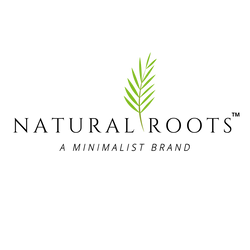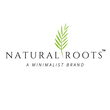The Battle Between Ivory/Yellow Shea Butter.....What's The Difference Anyway?
OK, so here we go. The age old question of what's the difference between Ivory Shea Butter (Image above) and Yellow Shea Butter (image below). I get this question so often that I decided to make a blog post about it in hopes to help everyone out. Don't get me wrong, I didn't wake up with this knowledge! I did A LOT of research on this matter when I was in the process of ingredient searching for Natural Roots LLC. And with all of the information that I found out about each butter we made a decision to only use raw unrefined Ivory Shea butter which is used in four of our most popular products called "the butta" moisturizing natural hair sealant "Smoove" body butter, "Silky" face moisturizer and "the conditioner" deep moisturizing hair conditioner. Stay tuned and you'll see why.
Ivory and yellow Shea Butter both start as fresh unrefined raw Shea butter. Raw, correctly produced, and unadulterated Shea Butter is Ivory to light yellow. Methods of production vary by regions which attribute to the color variations. However, bright yellow like the picture below is not 100% pure Shea butter (I apologize in advance to those who thought it was). To be clear, it is not bad Shea Butter when it's fresh and colored correctly. A few of the methods used to color ivory Shea is actually just as beneficial for your hair and skin. The problem is that it's difficult to distinguish which method was used. Unfortunately, there are some methods of coloring that has zero benefits and may be used by the unscrupulous to mask flaws in the ivory Shea Butter.

Now, the question is how does Raw Shea Butter goes from Ivory to this bright yellow coloring? Boru-tutu Roots, Turmeric Powder, Red Palm Oil, and or a host of other artificial dyes. Boru-tutu has its own set of medical claims and makes a good coloring agent. Turmeric powder is easily distinguishable with a stronger scent. The powder from Turmeric has benefits as well, but not hardly enough to add anything that Shea Butter can not do on its own. Red Palm Oil, IMO is the worst. Red Palm Oil will make yellow Shea Butter super smooth and easier to spread but it is a highly comedogenic oil, will clog pores, and is not good for acne prone skin. When you hear that yellow Shea Butter breaks people out almost instantly, red palm oil could be the reason. Yellow Shea Butter is also more difficult to cover its scent in natural products. Artificial coloring serves absolutely no benefit other then making the butter aesthetically pleasing to those who believe yellow Shea Butter is the "real" Shea Butter.
Shea Butter that is really old eventually turns white so for the unscrupulous sellers, coloring is a very good way to revive old Shea into the highly demanded yellow Shea Butter. As you can see, there is a lot to know about Shea Butter especially if you want certainty of ingredients and products. Natural Roots LLC will continue to give you only the best ingredients and products and will continue to search for only the best for you our valued customers.
Don't forget to keep up with us!
IG: @naturalrootsllc
YouTube: Natural Roots LLC
Facebook: @naturalrootsllc2







WOW! My eyes have been opened! Thank you for this information. Ive been using both. When making my body butters but I found the yellow is harder to scent, is thicker and has its own natural scent thats hard to blend with other scents or fragrances.
I’ve been trying to learn and find out where to get the best real raw and unrefined African Shea butter. The one I bought looks just like the picture you said that wasn’t real pure Shea butter. Where can I purchase 100% raw and unrefined Shea butter from and which is the best brand?
Leave a comment